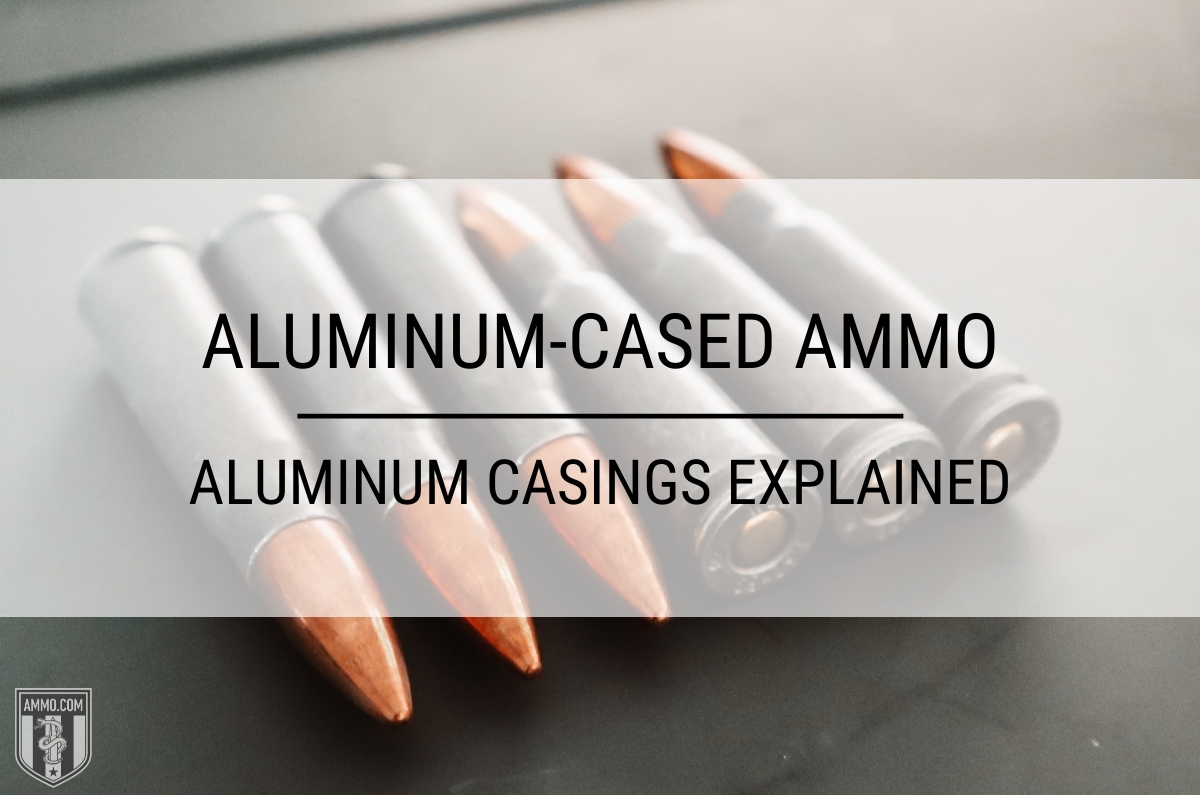Aluminum-Cased Ammo: Aluminum Casings Explained
 Aluminum-cased ammo has had its proponents and detractors since its introduction in the early 1980s, but demand continues among those who want a cheap alternative to brass-cased ammunition. Today, only two major manufacturers are producing aluminum-cased ammo – Federal (with Federal aluminum 9mm among its most popular) and CCI.
Aluminum-cased ammo has had its proponents and detractors since its introduction in the early 1980s, but demand continues among those who want a cheap alternative to brass-cased ammunition. Today, only two major manufacturers are producing aluminum-cased ammo – Federal (with Federal aluminum 9mm among its most popular) and CCI.
Although not in huge demand for small arms ammunition, aluminum ammo is the standard for tank and auto cannon shells, such as the 120mm aluminum rounds used in the Abrams tank and the 30mm ammo used in the GAU-8 – most commonly found in the A-10 Warthog.
Is Aluminum Cased Ammo Bad for Your Gun?
The simple answer is: No, not at all. Shoot it to your hearts content!
Whenever you start changing the material for cartridge cases, gun enthusiasts start getting twitchy about the integrity of their firearm. Indeed, it doesn’t take too much internet searching to find anecdotal stories about how Ammo Brand X is bad for Gun Brand Y and you should never fire it because this one time (at Band Camp) when they submerged their pistol in peanut butter, drug it behind their quad in the mud, and dunked it into swamp water the extractor broke.
Though the above scenario is entirely fictitious (and hilarious), it goes to show you that you can find anything on the internet about ammo and it might not be completely true. The aluminum in the case will not damage your gun’s chamber, extractor, or ejector because they are made from steel.
Hardness is measured on the Brinell Hardness Scale in units of BHN (Brinell Hardness Number). For comparison, stainless steel has rating of 200 BHN where pure aluminum is 15 BHN. There is literally no danger to your firearms steel parts when using aluminum cased ammo.
What you can experience though, is failure to eject (FTE), failure to feed (FTF) and double-feeds when using aluminum cased ammo. Let’s examine why that can occur. Aluminum has a lower melting point than brass (660°C vs 900°C, respectively). Now this does not mean that the case is going to melt into the chamber of your favorite pistol or revolver.
What it does mean is that the cartridge case can be kind of “sticky” during the ejection process. Furthermore, aluminum has a lower surface lubricity when compared to brass which can also cause extraction to feel sluggish.
These two issues can cause aluminum cased ammo to be more difficult to extract during the firing process. However, in my experience, guns are like children. Some of them are picky with what they eat and others aren’t.
The true test is to just buy some aluminum cased ammo and send a few boxes through your pistol. I’m pretty sure after box #2 or #3 you’ll know if your handgun has an appetite for aluminum cased ammo or not. If your gun happily eats it, then enjoy your reduced cost of practice ammo and spend a little more time at the range because you’ll be shooting for cheaper. If your gun treats aluminum cased ammo like my daughter treats zucchini…well…that’s just the way some kids are and you’ll need to feed it brass cased ammo instead.
Aluminum vs Brass Ammo
The difference between brass vs. aluminum is a common question. One big reason that aluminum bullets are gaining fans among the shooting public is cost savings. The price of brass fluctuates based on the current price of copper, and during certain times it can be relatively expensive to mass produce brass-cased ammunition. There's an easy solution found in aluminum, due to more stability in price that is considerably less than brass. An interesting side note is that this metal is also tough enough for use in aircraft while being remarkably light (about 1/3 the weight of brass).
Pros of Aluminum-Cased Ammos
Cons of Aluminum-Cased Ammo
Cartridges with an aluminum casing are a great choice for people who have no interest in reloading their spent brass casings. The aluminum cases also provide an excellent choice for long-term storage ammo, as they are extremely corrosion-resistant. Finally, the competitive price makes aluminum-cased ammo a great choice for casual shooting.
